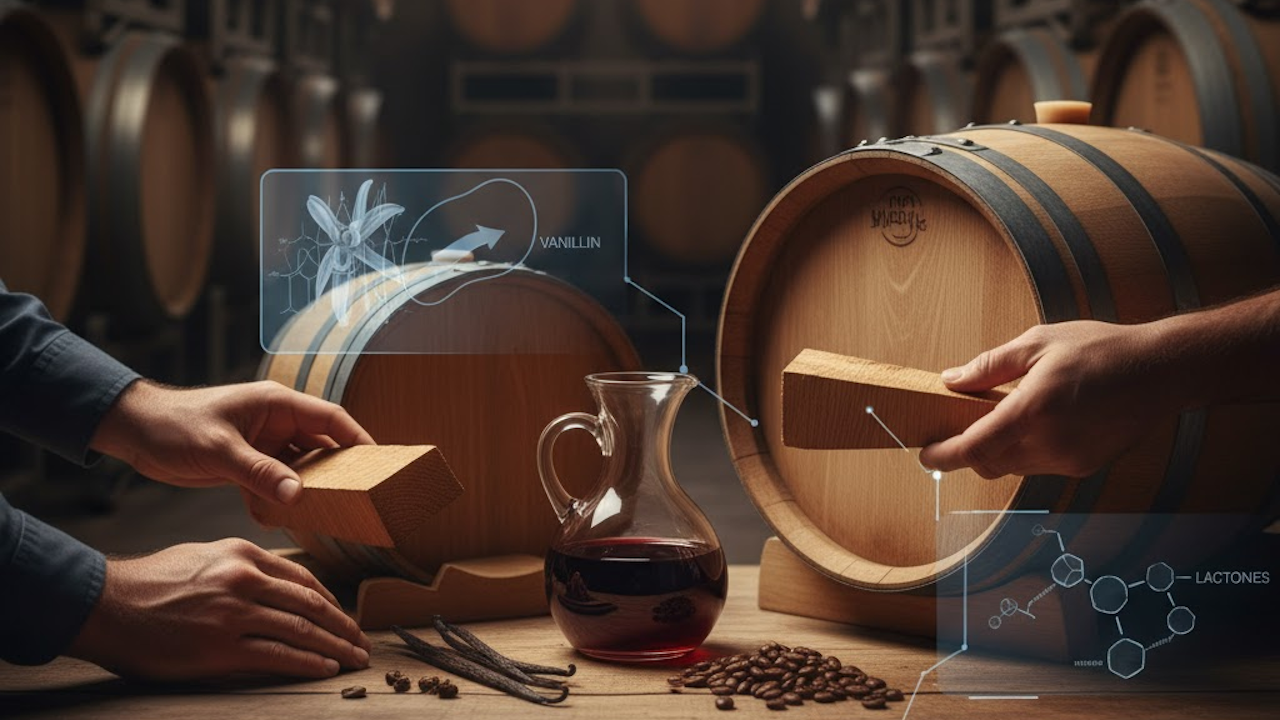The influence of oak is one of the most transformative elements in winemaking, shaping a wine’s flavor, aroma, texture, and longevity. What began as a purely practical means of storage and transportation in ancient times has evolved into a sophisticated, deliberate stylistic choice, with winemakers meticulously controlling every variable, from the type of oak used to the level of barrel toasting.
🏛️ A History of Utility and Serendipity
The use of wooden vessels for liquid storage dates back millennia, but it was the Romans who popularized the use of the oak barrel. Before oak, wines were typically stored in heavy, fragile clay amphorae. The Gauls, however, were skilled at cooperage, using wooden barrels for beer. The Romans quickly adopted these barrels for wine, recognizing that oak was durable, relatively watertight, abundant in European forests, and easier to shape than other woods.
The flavor impact was an accidental discovery. As wine was transported and aged in these oak barrels for extended periods, winemakers realized the wood imparted pleasant qualities, making the wine smoother, softer, and more complex, with noticeable aromas of spice and sweetness. This serendipitous finding cemented oak’s role in winemaking, shifting it from a mere container to an essential aging tool.
🧪 The Science of Flavor Extraction: Key Compounds
Oak wood, primarily composed of cellulose, hemicellulose, and lignin, contains a treasure trove of flavor compounds that are slowly extracted by the wine during maturation. The specific aromas imparted are tied to the chemical breakdown of these components, which is heavily influenced by the toasting process:
- Vanillin: This compound, derived from the lignin in the wood, is responsible for the universally recognized vanilla flavor in oak-aged wines.
- Oak Lactones (Methyl-octalactones): These contribute powerful woody, coconut, and dill notes. American oak has significantly higher concentrations of these compounds than French oak, explaining its more pronounced, sweeter character.
- Furfural and 5-methylfurfural: These compounds are created when hemicellulose sugars caramelize during the toasting process. They contribute flavors of caramel, almond, and dried fruit.
- Guaiacol and Eugenol: These are volatile phenols that provide notes of smoke, clove, and spice. Their intensity is directly proportional to the level of toasting applied to the barrel.
🍷 Influence on Texture and Structure
Beyond flavor, oak fundamentally changes the texture and structure of a wine through two key mechanisms:
Micro-Oxygenation
Oak barrels are porous, allowing a minute, controlled amount of oxygen to permeate the wood and interact with the wine. This process, known as micro-oxygenation, is crucial for maturation. The slow exposure to oxygen:
- Softens Tannins: It polymerizes, or links together, the harsher tannins present in red wine (derived from grape skins, seeds, and stems), making them feel rounder, smoother, and more integrated on the palate.
- Stabilizes Color: For red wines, oxygen assists in linking color compounds and tannins, leading to a more stable and deep color that lasts through aging.
Tannin Contribution
Oak wood contains hydrolyzable tannins called ellagitannins. These are extracted by the wine, adding to its overall tannin content and structure. This is particularly important for white wines like Chardonnay, which lack the tannins from grape skins, as oak can add body and ageworthiness.
The fine-grained structure of the wood also imparts a desirable silky mouthfeel, contributing to a richer and creamier texture in the final wine, especially when coupled with bâtonnage (stirring the lees, or dead yeast cells, which may be done in the barrel).
🗺️ Geographic Differences and Winemaker Control
The source of the oak is a primary factor determining the resulting flavor profile. The two most common species are:
French Oak (Quercus petraea and Quercus robur)
- Origin: Forests like Allier, Tronçais, and Vosges.
- Characteristics: Typically tight-grained, which results in a slower, more subtle release of flavor and oxygen. French oak imparts elegant notes of vanilla, baking spices, cedar, and fine-grained tannins. It is often preferred for more delicate wines, such as Pinot Noir and premium Chardonnay.
American Oak (Quercus alba)
- Origin: Primarily Missouri, Minnesota, and Oregon.
- Characteristics: Generally wide-grained, leading to a faster, more robust release of flavor compounds. American oak imparts stronger, sweeter notes of vanilla, coconut, caramel, and dill. It is frequently used for bold, full-bodied wines like Cabernet Sauvignon and Zinfandel.
Toasting Levels
The interior of a new barrel is heated over an open fire or steam, a process called toasting, which dramatically alters the flavor contribution.
- Light Toast: Preserves more of the raw wood tannins, adding subtle spice and a toasted note.
- Medium Toast: The most common level, striking a balance between wood character and caramelized notes, yielding complex flavors of vanilla, spice, and light smoke.
- Heavy Toast: Creates dark, caramelized compounds, imparting pronounced flavors of smoke, mocha, and roasted coffee.
Other factors controlled by the winemaker include barrel size (smaller barrels expose more wine to oak, increasing the influence), barrel age (new oak imparts the strongest flavor, while barrels used four or more times are considered “neutral” and only offer micro-oxygenation benefits), and the duration of aging.
In summary, oak is far from a simple additive; it is a profound winemaking tool that, through the interplay of chemistry and craft, provides structure, complexity, and a sophisticated aromatic profile, transforming simple grape juice into a complex, age-worthy beverage.

